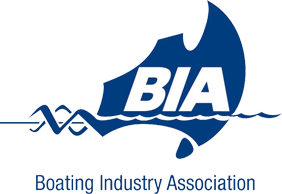Setting an Anchor – Basic Tips and Techniques
26 February 2021Setting an Anchor – One of the most critical parts of a yacht that must be working at all times is the anchor and anchor system. An anchor is a device that is designed to restrict a yacht from moving in the water and retain its position even under heavy conditions. Without the anchor, the yacht may be swept away by heavy water movements, strong winds and slammed into structures or other yachts. Even if you aren’t intending to use the anchor while using your yacht, it is still very important to make sure you have it and the system is working properly in case of an emergency, it is also a requirement by Australian Law.
There are certain tips and techniques that can be done to properly set up the anchor. Some of these tips and techniques are as follows:
Appropriate Anchor Size
It is important to match the size and type of anchor with the size of your yacht and how / what type of anchoring you intend to use it for. For instance, a boat that is around 32-foot must utilise an anchor that weighs around 25 pounds. To make sure that an anchor is appropriate for your boat, you can check manufacturer guidelines or consult with us for more information. If the wrong size anchor is used (it is too small for the yacht) the anchor won’t be able to hold and the yacht will drag the anchor along the seabed, which can result in the yacht getting damaged or its surroundings.
Utilise the Engine and Head into the Current
The correct and easiest way to deploy an anchor involves using the motor at a very slow speed to steer directly into the wind/current. Before deploying the anchor, it is important to organise the rope and chain, so it can run out smoothly and to prevent it catching or tangling on anything. Motor slowly against the wind/current, so that you stay in the one position while lowering the anchor at the bow and make sure you lower it past where you intend to end up. Once you feel the anchor hit the bottom you can put the engine in neutral to let the wind/current push you back slowly while you let out more line. It’s also a good idea to leave the motor running in case there is a problem or if you need to do it again.
Scope Out
Knowing how much rope/chain to use is called “rode”, it refers to how much line to have out, according to the depth of water and the weather conditions while at anchor. To work out the rode you multiply the maximum depth of the water by 7-10 to give you how much of line to deploy. (Rode = 7-10 x Max Water Depth) It is also recommended to deploy extra if you are forecasted to counter strong winds or currents. There are guidelines on how much chain or line to have according to the size of boat you have.
Anchor chain is critical to weighing down the line to ensure the anchor is being dragged horizontally and to ensure it lodges properly in seabed. Otherwise, if there isn’t enough chain deployed and the line is at a steeper /straight line to the boat, the anchor will be pulled out of the seabed and the boat will drag the anchor. Another useful tip is to make sure the yacht can’t hit anything in a full 360-degree direction, as weather conditions can change (ei. wind or current), which results in the boat swinging and changing position/facing direction. A simple but extremely critical tip is to make sure the end of the anchor line is secured to the bow of the boat before deploying the anchor, to make sure you don’t lose the anchor and line all together.
Identify the Bottom
When setting the anchor on a specific place, you must identify and know its bottom structure. While a chart or plotter can normally provide the needed data for the bottom structure, there is still a chance where the unexpected can occur on the said part. Most bottom areas of the sea are filled with sand, mud, clay, and grass. Fortunately, most anchors can effectively work with these elements.
Check Your System
For smooth and reliable anchoring, it is important to check over the entire anchoring system, whether its you or if you get your rigger (us) to do it for you. Observing the entire length of anchor chain/line for rusty and damaged links rope for fraying or damage rope is important to ensure they don’t break while at anchor. Anchor roller condition makes deploying and storing the anchor smooth and easy. The windlass should be checked for corrosion and correct operation. Check the rope/chain is secured to the yacht and anchor, also looking at the shackle’s conditions (ie. rusty, loose or broken), we use seizing wire to make sure they cannot come undone or work loose.
If you want to know more about anchoring or if you have more specific questions about anchoring with your yacht, feel free to call us at Riggtech.
Optimized by: Netwizard SEO


